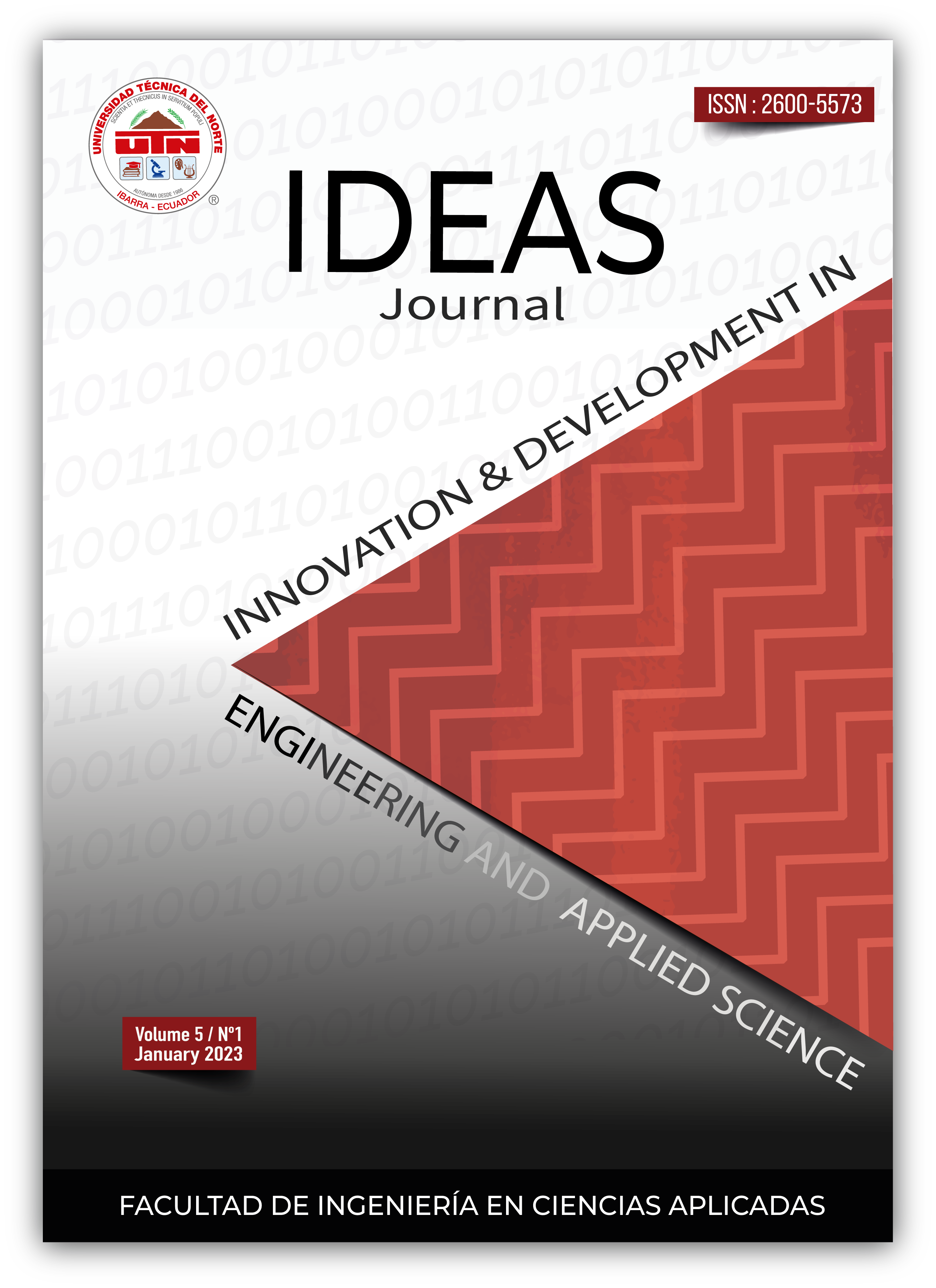Material compuesto biodegradable para aplicaciones ortopédicas: algunas consideraciones sobre caracterización microestructural, electroquímica y propiedades mecánicas.
Contenido principal del artículo
Resumen
En los últimos años, se han desarrollado una nueva ola de biomateriales para una diversidad de aplicaciones. Los investigadores se han centrado en mejorar las características y propiedades esenciales en los biomateriales en aplicaciones ortopédicas, la biocompatibilidad, bioactividad y el control de los mecanismos de corrosión en materiales biodegradables han sido blanco de estudio y desarrollo de nuevos materiales innovadores en esta área de la biomédica. Al implementar la adición de un material cerámico de refuerzo en una matriz de aleación metálica biodegradable, se pueden mejorar varias de estas características, y en adición a estas, propiedades mecánicas, superficiales y hasta de osteointegración. En esta revisión, se intentará dar un contexto de la caracterización microestructural, electroquímica y mecánica de estos biomateriales. al igual que aplicaciones y técnicas de síntesis.
Descargas
Detalles del artículo
Citas
P. Gutiérrez de Rozas Astigarraga, “Una visión histórica de la cirugía ortopédica y traumatológica a través del desarrollo de los bioimplantes, “Universidad de Cantabria, 2013.
E. Marchetti, O. May, J. Girard, H.-F. Hildebrand, H. Migaud, and G. Pasquier, “Biomateriales en cirugía ortopédica”, EMC - Técnicas Quirúrgicas - Ortopedia y Traumatología, 2(3), pp. 1–24, 2010.
A. Aybar, “Historia- concepto de deformidad y disfuncion- clasificacion de enfermedades del aparato locomotor”, pp. 63–72, [Online]. Available: http://www.sld.cu/galerias/pdf/sitios/rehabilitacion-doc/clase06.pdf.
Espinoza Coronado, W. (2020). Distribución de planta y su influencia en la productividad en el área de producción en una empresa del sector metalmecánica en los últimos 10 años. N. Eliaz, “Degradation of implant material”, Degradation of Implant Materials, 9781461439, pp. 1–516, 2012
J. María Varaona, “Historia de la osteosíntesis,” Revista de la Asociación Argentina de Ortopedia y Traumatología, 75(3), 2010.
A. Vennimalai Rajan, C. Mathalai Sundaram, and A. Vembathu Rajesh, “Mechanical and morphological investigation of bio-degradable magnesium AZ31 alloy for an orthopedic application,” Materials Today: Proceedings, 21, pp. 272–277, 2020.
M. Carboneras Chamorro et al., “Materiales metálicos biodegradables en el campo biomédico”, Acta Científica y Tecnológica, 19, pp. 30–34, 2011, [Online]. Available: https://core.ac.uk/download/pdf/36133460.pdf.
M. Navarro, A. Michiardi, O. Castaño, and J. A. Planell, “Biomaterials in orthopaedics,” Journal of the Royal Society Interface, 5(27). Royal Society, pp. 1137–1158, Oct. 06, 2008.
S. V. Gohil, S. Suhail, J. Rose, T. Vella, and L. S. Nair, “Polymers and Composites for Orthopedic Applications,” in Materials and Devices for Bone Disorders, Elsevier Inc., 2017, pp. 349–403.
H. Kabir, K. Munir, C. Wen, and Y. Li, “Recent research and progress of biodegradable zinc alloys and composites for biomedical applications: Biomechanical and biocorrosion perspectives,” Bioactive Materials, 6(3). KeAi Communications Co., pp. 836–879, Mar. 01, 2021.
V. K. Bommala, M. G. Krishna, and C. T. Rao, “Magnesium matrix composites for biomedical applications: A review,” Journal of Magnesium and Alloys, 7(1). National Engg. Reaserch Center for Magnesium Alloys, pp. 72–79, Mar. 01, 2019.
J. B. Park, “Aluminum Oxide: Biomedical Applications,” in Concise Encyclopedia of Advanced Ceramic Materials, Elsevier, 1991, pp. 13–16.
H. Aghajani Derazkola and A. Simchi, “Effects of alumina nanoparticles on the microstructure, strength and wear resistance of poly(methyl methacrylate)-based nanocomposites prepared by friction stir processing,” Journal of the Mechanical Behavior of Biomedical Materials, 79, pp. 246–253, Mar. 2018.
Prakash, S. Singh, K. Verma, S. S. Sidhu, and S. Singh, “Synthesis and characterization of Mg-Zn-Mn-HA composite by spark plasma sintering process for orthopedic applications,” Vacuum, 155, pp. 578–584, Sep. 2018.
Y. H. He, Y. Q. Zhang, Y. H. Jiang, and R. Zhou, “Effect of HA (Hydroxyapatite) content on the microstructure, mechanical and corrosion properties of ([Formula presented])-xHA biocomposites synthesized by sparkle plasma sintering,” Vacuum, 131, pp. 176–180, Sep. 2016.
S. V. Dorozhkin, “Calcium orthophosphate coatings on magnesium and its biodegradable alloys,” Acta Biomaterialia, 10(7). Elsevier Ltd, pp. 2919–2934, Jul. 2014.
B. Heimann, “Magnesium alloys for biomedical application: Advanced corrosion control through surface coating,” Surface and Coatings Technology, p. 126521, Oct. 2020.
P. Li et al., “Selection of extraction medium influences cytotoxicity of zinc and its alloys,” Acta Biomaterialia, 98, pp. 235–245, Oct. 2019.
ASTM, “ASTM G59-97(2020),” Standard Test Method for Conducting Potentiodynamic Polarization Resistance Measurements ASTM International, West Conshohocken, PA, 2020. http://www.astm.org/ (accessed Dec. 06, 2020).
ASTM, “ASTM G31-72(2004),” Standard Practice for Laboratory Immersion Corrosion Testing of Metals, ASTM International, West Conshohocken, PA, 2004. https://www.astm.org (accessed Dec. 06, 2020).
Z. Cui, Y. Zhang, Y. Cheng, D. Gong, and W. Wang, “Microstructure, mechanical, corrosion properties and cytotoxicity of beta calcium polyphosphate reinforced ZK61 magnesium alloy composite by spark plasma sintering,” Materials Science and Engineering C, 99, pp. 1035–1047, Jun. 2019.
P. Díaz Campbell-Smith, “Sinterización por Spark Plasma Sintering (SPS) de materiales compuestos para herramientas de corte-Trabajo fin de máster-Universidad de Oviedo.”
C. Prakash, S. Singh, B. S. Pabla, S. S. Sidhu, and M. S. Uddin, “Bio-inspired low elastic biodegradable Mg-Zn-Mn-Si-HA alloy fabricated by spark plasma sintering,” Materials and Manufacturing Processes, 34(4), pp. 357–368, Mar. 2019.
D. Kumar, “Bio-mechanical characterization of Mg-composite implant developed by spark plasma sintering technique,” Materials Today: Proceedings, Jul. 2020.
H. R. Zheng, Z. Li, C. You, D. B. Liu, and M. F. Chen, “Effects of MgO modified β-TCP nanoparticles on the microstructure and properties of β-TCP/Mg-Zn-Zr composites,” Bioactive Materials, 2(1), pp. 1–9, Mar. 2017.
S. Jayasathyakawin, M. Ravichandran, N. Baskar, C. A. Chairman, and R. Balasundaram, “Magnesium matrix composite for biomedical applications through powder metallurgy – Review,” in Materials Today: Proceedings, Jan. 2020, 27, pp. 736–741.

